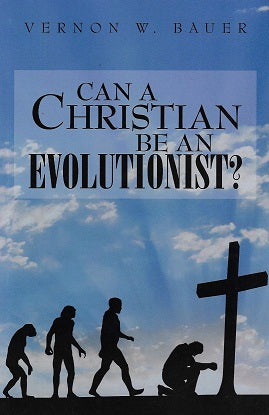1
/
van
1
Can a Christian Be an Evolutionist?
Can a Christian Be an Evolutionist?
Bauer, Vernon W.
Normale prijs
€16,00 EUR
Normale prijs
Aanbiedingsprijs
€16,00 EUR
Eenheidsprijs
/
per
Belastingen inbegrepen.
Verzendkosten worden berekend bij de checkout.
Aantal op voorraad: 1
Kan beschikbaarheid voor afhalen niet laden
Korte omschrijving 📚
Korte omschrijving 📚
Drawing on the work of prominent theologians, this book explores the biblical feasibility of a position known as Evolutionary Creationism. It is most similar to Ken Miller’s "Finding Darwin’s God" and Denis Alexander’s "Creation or Evolution." As a college professor, Dr. Bauer has met too many students who feel they have to keep their biology in a “different part” of their brain, or worse, tell him they have decided to walk away from the Christian faith over this issue. Neither of these responses is acceptable. This book is unlikely to change the mind of a person who is positive they have all of the answers to this issue already. That does not mean it is not worth a read. Several pastors and scientists from a variety of denominations and disciplines, respectively, reviewed the manuscript prior to publication.[Material modified from the Back Cover]For nearly 200 years the natural creation has revealed that life was created by the process of biological evolution. Some claim that these discoveries contradict the Bible’s creation accounts. This cannot be. Since God reveals Himself both through the Bible and through the creation, the two must complement each other. It is our job to adjust those interpretations so that we can understand the whole revelation. When apparent conflicts arise, it is not the sacred Scripture or the scientific data that are at stake, but rather limited human interpretations of those two revelations. The Bible tells us that God is the Creator. The creation tells us that biological evolution really takes place. Consequently, we can conclude that God has actually created an evolutionary creation. While this is not the first book to discuss Evolutionary Creationism, it is the most comprehensive. Most books on the subject focus on either the science or the theology and leave the reader with an incomplete picture. In contrast, this book addresses both sides of the issue in depth.Book Highlights:+ A sound, biblical interpretation of Genesis 1 is presented. This interpretation is based on the cultural context of the ancient Near East. When Moses wrote the creation account, he used the language of appearances so that every Human Being that has ever lived could understand it. As such, it can be understood by all, regardless of culture, historical period, ethnicity, age, or level of education. The purpose of Genesis was, and still is, to demythologize the creation.+ God’s role as Creator, the image of God in humans, the meaning of “very good,” the relational nature of creation, the function of creation as a revelation and other doctrines are explored. Also introduced is the fact that the Bible does not refer to the natural creation in supernatural terms.+ The evidence for evolution is described. Discoveries from astronomy, the fossil record, biogeography, anatomy, developmental biology, molecular biology, and genetics corroborate the evolutionary creation.+ Common misconceptions about evolution are addressed, including: transitional fossils, the objectives of evolution, irreducible complexity, and the 2nd law of thermodynamics.+ God’s creative design is explained. The evolutionary creation operates according to the natural rules of random mutation and natural selection. Rather than pointing away from God, randomness in creation is actually part of His design.+ Theological considerations are addressed, including: whether the earth shows the “appearance of age,” whether the Cambrian Explosion or Noah’s Flood can explain the evidence, and whether physical death could have occurred before the Fall.+ A dual-creation mechanism for the origin of Human Beings is put forward, which accounts for discoveries in anthropology, paleontology, and genetics, while staying true to the biblical text and keeps Adam and Eve out of the realm of myth and allegory. In this treatment they are real people.
Share

